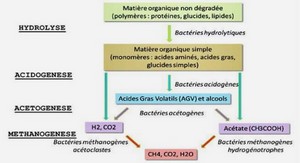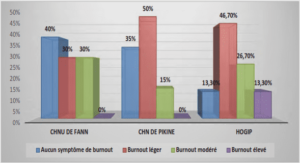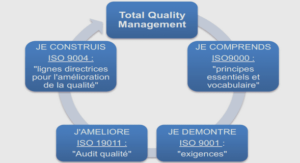Determination of the Absolute Configuration
The absolute configuration of asymmetric centres of two a-pyrones isolated from Ravensara crassifolia was determined using ihe Mosher method. The conventional analysis of the purifred ester derivatives by ‘HNMR was replaced by a rapid and sensitive method in which the a-pyrones were analysed under isocratic reversed-phaie LC-NMR cônditions prior to and after derivatisation reactions. Comparison of ttre LC-IHNMR spectra of the actual d-pyrones with those of the corresponding Mosher’s esters recorded in the acetonitrile:deuterated water solvent system exhibited shifts comparable with those obtained using conventional deuterated solvents. Based on the shifts recorded, determination of the absolute configuration was possible by application of Mosher rules. The use of LC-NMR has permitted a direct analysis of crude reaction mixtures containing less than 50 pg of the starting material. Completion of the reaction was checked by LC-MS and the crude reaction mixture was analysed by stop-flow LC-NMR. This methodology seerns very promising for the determination at the micro-scale level of the absolute configuration of natural products which are available only in very small arnounts. Copyright @) 2003 John Wiley & Sons, Ltd.
Determination of absolute configuration remains à challenging task in the sfucture elucidation of natural products. Only a few physical methods, such as chirality excitation (Harada and Nakanishi, 1983) and X-ray crystallography (Fiud et al., 1977) provide the required information, but they have some limitations. A chemical method involving the synthesis of Mosher’s esters has been frequently used for the characterisation of various natural products bearing secondary alcohol functions (Ohtani et al., l99l; Gs et al., 1994; Jeong et a1.,2000: Rasmussen et a1., 2000). In this case, the H’-NMR nspectrâ of (R)- and (^f)-2-methoxy-2-phenyl-(trifluoromethyl) acetic acid (MTPA) ester derivatives of the analytes are compared. The difference in chemical shifts of the diastereoisomers determined from:Preparation and purification of Mosher’s esters. 65- (2,S-Hydroxy -6-phenylhexyl)-5,6-dihy dr o -2H -pyran-2- one (1; 5 mg in 2mL of dichloromethane) was sequentially treated with pyridine (0.2 mL) and (R)-(-)-MTPA chloride (100mg). The mixture was stirred at room temperature under an atmosphere of nitrogen for 5 h, and the progress of the reaction was monitored by HPLC. The reaction mixture was concentrated and dried, and the residue dissolved in dichloromethane and washed with l7o sodium bicarbonate (5mL) and water (2 x 5mL). The organic layer was purif,ed by HPL{ using a Waters (Milford, MA, USA) Bondapak@ Cra column (100 x 25mm i.d.; 10 pm) affording (S)-Mosher’s ester derivative (1a) (5 mg; 56%o yield). The (R)-Mosher’s ester derivative (1b) (6 mg; 67.l%o yield) was prepared using (^ÿ)-(*)-MTPA chloride under the conditions described above. Mosher’s ester derivatives of 6R- (4S,6S-dihydroxy- I O-phenyl- I -decenyl )-5,6-dihydro-indicates whether the alcohol is (R) or (,S). based on established conformational models (Dale and Mosher, 1968,1913;Dale et a1.,1969; Sullivan et aI.,1973;Trost et a1.,1986). Although it is a very efficient method for determining absolute configuration, the synthesis of Mosher’s esters requires relatively large amounts of samples for derivatisation. When working with naturaln products, pure compounds are often available in only very limited amounts and this hinders the determination of absolute conflguration by conventional methods.
Preparation of Mosher’s ester by micro-reaction.
Compound 1 (50 pg in 100 pL of dichloromethane) was transferred to a 2mL HPLC vial with a capped septum and treated with 20 pL of pyridine and 100 mg of (R)- (-)-MTPA chloride. This low amount of pyridine compared with MTPA chloride was found not to affect the reaction yield, The mixture was stirred at room temperature under an atmosphere of nitrogen for 4 h and the progress of the reaction was monitored by LC-UVAPCI/ MS (10 pL of the reaction mixture was analysed, being5Vo of the total reaction mixture). Dichloromethane was removed with nitrogen flux, and the total mixture was solubilised in 100 pL of acetonitrile (HPLC grade) and analysed by stop-flow LC-NMR [the number of transients (NT) was 10241. Mosher’s ester derivative (1b) was prepared using (S)-(+)-MTPA chloride under the conditions described above.
Over the last l0 years, numêrous cases ofintoxications, leading for the most part to end-stage renal failure, have been reported alter consumption of slimming regimens madezof Chinese herbal preparations. These intoxications were associated with species of lhe Aristolochia genus, such as Aristolochiafangchi (Aristolochiaceae), known to contain very nephrotoxic and carcinogenic metabolites named aristolochic acids. Several commercial dietary supplements, teas and phytomedicines used as slimming regimens were analysed for their aristolochic acid I content. A preliminary detection of this toxic compound was made by thinJayer chromatography. The presence of aristolochic acid I in these prgparations was confirmed by a HPLC/UV-DAD/MS analysis. A quantitative determination of aristolochic acid I was also achieved in the incriminated preparations using both UV and MS detection. Out of 42 analysed preparations, four were found to contain aristolochic acid I and t\ryo were suspected to contain aristolochic acid derivativês. Immediate removal of these products from the Swiss market was called for.





